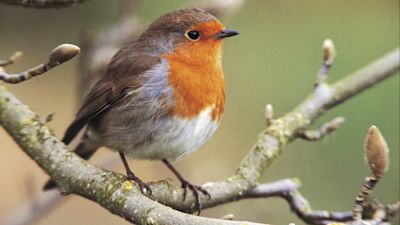What is the Big Garden Birdwatch and how can you get involved?

The Big Garden Birdwatch is back this weekend, with thousands of people set to be watching and counting birds in their gardens across Wales.
But what is the Birdwatch, why is it the world's largest garden wildlife survey and how do you get involved? Here's all you need to know.
What is the Big Garden Birdwatch?
It is a survey that has been running for over four decades, during which the public are asked to watch and record all the types of birds visiting their garden for just one hour a day over the course of a weekend.
It has highlighted winners and losers in the garden bird world, giving the RSPB an insight into how our winged friends are faring.
The RSPB says last year, 53,000 people took part in the Big Garden Birdwatch and more than one million birds were counted over a three-day period.
The house sparrow retained its title as Wales’ most seen bird.
When is it happening?
The count begins from Friday 28th January - 30th January.
How can I get involved?
Watch the birds around you in your garden or local park for just one hour a day and keep count of how many land. Then, log the results of the highest number of each bird species you see at any one time – not the total you see in the hour - and send them onto the RSPB survey.
RSPB Cymru Director Alun Pritchard said: "By taking part in the Birdwatch, you are helping to build an annual snapshot of how our birdlife is doing across Wales. It is only by us understanding how our wildlife is faring that we can protect it."
How can I attract birds to my garden?
You can put out leftovers such as some bread, fruit cake, dried fruit, unsalted pastry, or fruit such as apples and pears. Don’t use anything mouldy or salty though, and if you have a dog don’t put out dried fruit – vine fruits such as raisins can be toxic to them.
Look for good quality bird food – those that don’t include ‘fillers’ such as dried peas and beans that birds rarely eat.
Blackbirds mostly feed on the ground and will eat a broad range of foods, from fatty nibbles to mealworms.
Finches, including chaffinches and green finches, use both a feeder and a bird table.
Blue tits and great tits use a feeder, eating seeds as well as suet and peanuts.